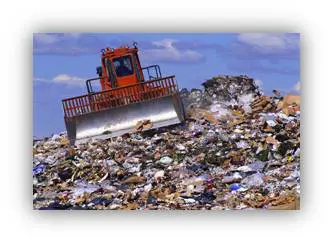4 Categories of KPIs for Lean Performance
by Stacey Barr |If you’re stuck for what to start measuring, there is one category of performance that is important to every organisation or business in every sector, industry and country. It’s waste, in all its forms. Which of the four categories matters most to you right now?

I’m obsessed with reducing waste.
Maybe it’s because my parents never let my sisters and I leave the dinner table until we’d finished everything on our plates, or maybe it’s because I want to do more than I ever seem to have time for. I’m known to get antsy about wasting even 5 minutes!
You don’t have to be obsessed like I am about waste for it to matter, though. Waste is the monster lurking behind why we don’t have more of the results we really want in our work, our lives, our world. So waste certainly qualifies as something worth measuring and improving.
Categories of waste
I particularly like Womack and Jones’ definition of waste from their book, Lean Thinking:
“…specifically any human activity which absorbs resources but creates no value: mistakes which require rectification, production of items no one wants so that inventories and remaindered goods pile up, processing steps which aren’t actually needed, movement of employees and transport of goods from one place to another without any purpose, groups of people in downstream activity standing around waiting because an upstream activity has not delivered on time, and goods and services which don’t meet the needs of the customer.”
To give us a simple starting point, let’s say waste can take one of four forms:
- waiting: in queues, in transit, for the next step to begin
- excess: over-processing, scrap, inventory, tasks done to a higher standard than required
- rework: items that need to be remade or fixed, tasks that need to be done again, errors that need correcting
- redundancy: items that aren’t needed at all, tasks that didn’t need to be done at all
There is, without doubt, at least one of these forms of waste in your organisation or business, whether you are manufacturing water tanks, constructing bridges, drafting transport policies or healing patients.
Finding YOUR waste
One of the easiest ways to find that waste is to flowchart your processes: your customer service process, your marketing process, your sales process, your policy development process, your maintenance process; whatever it might be.
Ask of each step you’ve flowcharted, is there any waiting here, any excess, any rework or any redundancy that’s big enough such that if we removed it, it would make a worthwhile difference in our results?
Then begin measuring and tracking it. What follows are some ideas to get you warmed up.
Measures for WAITING
Whether it’s people waiting, like colleagues or customers, or things waiting, like unfinished goods or uncompleted projects or tasks or approvals, waiting basically means queuing until the next step is ready or free again to process the next input.
Some very simple measures of waiting include:
- Number of people or things waiting or queuing for the next step in the process
- Total amount of time a person or thing is spending waiting or in queues
- Proportion of total process cycle time spent queuing or waiting
Measures for EXCESS
Excess is work or materials that go beyond what is actually needed and sufficient. I’ve heard engineers call it “gold plating” when projects go beyond the required specifications. Manufacturers produce off-cuts known as scrap. Detail-oriented people (some call them control freaks) spend too much time checking and re-checking things that don’t even affect the outcome.
You can measure excess like this:
- Total volume or weight of scrap as a percentage of input materials
- Proportion of items exceeding specifications
Measures for REWORK
When you have to do something again because the first time it didn’t work, or make another one because the first one wasn’t right, or correcting a mistake, you’re reworking. Rework is what happens when it’s not right, first time.
Example measures for rework include:
- Percentage of times it was right first time
- Total time spent doing rework
- Percentage of total processing time that was rework time
Measures for REDUNDANCY
If you’re doing tasks that don’t need to be done at all, or you’re stockpiling information or inventory that rarely gets used, or you’ve built in a lot of buffer time to allow for running late, you have redundancy.
Some of the classic ways to measure redundancy are these:
- Inventory turn (how fast inventory is used)
- Total volume or value of inventory
- Number of inventory items
- Total time spent on tasks that don’t contribute to goals or core business
Would you prefer just one measure for reducing waste?
Cycle time, when you define it as the time it takes from when a customer or stakeholder declares a need for something to the time when they have that need fulfilled, is a great driver of waste reduction.
Working to reduce the cycle time forces you to find and address where the different types of waste are in your process. And keeps you focused on one of the reasons you’re removing waste: to get the results you want, sooner.
TAKE ACTION:
Which category of waste strikes a chord with you? Are you measuring it? Are you doing anything to reduce it? Is now the time to start?
Connect with Stacey
Haven’t found what you’re looking for? Want more information? Fill out the form below and I’ll get in touch with you as soon as possible.
167 Eagle Street,
Brisbane Qld 4000,
Australia
ACN: 129953635
Director: Stacey Barr




